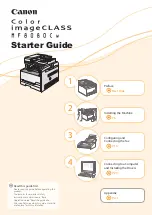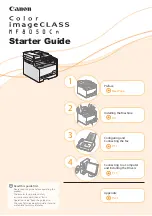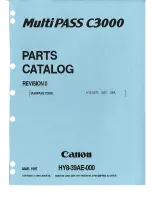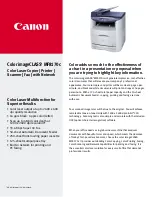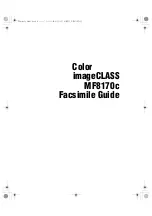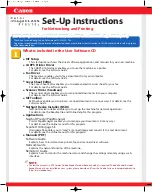
1. Introduction and Installation
13
Finding the Controls
1.4 Description of buttons
L
Keep the front cover page open for button
locations.
A
Station keys
L
To use the one-touch dial feature (page
31, 33).
B
{
BROADCAST
}
L
To send a document to multiple parties
(page 34, 35).
C
{
MANUAL BROAD
}
L
To send a document to multiple parties
manually (page 34, 35).
D
{
LOWER
}
L
To select stations 8–14 for the one-touch
dial feature (page 31, 33).
E
{
COLLATE
}{
DIRECTORY
}
L
To make a collated copy (page 46).
L
To initiate the navigator directory (page
32, 34).
F
{
CONTRAST
}
L
To select a contrast (page 28, 45).
G
{
RESOLUTION
}
L
To select a resolution (page 28, 45).
H
{
ZOOM
}{
QUICK SCAN
}
L
To enlarge or reduce a document when
copying (page 46).
L
To store a scanned document into
memory, and then send it (page 29).
I
{
MENU
}
L
To initiate or exit programming.
J
{
STOP
}
L
To stop an operation or programming
session.
L
To delete a character from names and
telephone numbers (page 26, 32).
L
To return to a previous step during
operation.
K
{
CALLER ID
}
L
To use Caller ID service (page 42, 43).
L
To change the display of the caller
information (page 42).
L
{
FAX AUTO ANSWER
}
L
To turn the auto answer setting ON/OFF
(page 36).
M
{
HELP
}
L
To print helpful information for quick
reference (page 23).
N
{
FAX
}
L
To switch to the fax mode (page 23, 28).
O
{
COPY
}
L
To switch to the copy mode (page 23, 44).
P
{
SET
}
L
To store a setting during programming.
Q
{
SCAN
}
L
To switch to the scan mode (page 23, 54).
R
Navigator key
L
To adjust volume (page 24).
L
To search for a stored item (page 33).
L
To select features or feature settings
during programming (page 57).
S
{
REDIAL
}{
PAUSE
}
L
To redial the last number dialled. If the line
is busy when you make a phone call using
the
{
MONITOR
}
button, the unit will
automatically redial the number up to 5
times.
L
To insert a pause during dialling.
T
{
R
}
L
To access special telephone services
such as call waiting or to transfer
extension calls.
U
{
MONITOR
}
L
To initiate dialling.
When you press
{
MONITOR
}
while
receiving a call, you will be able to hear
the other party, but the other party will not
be able to hear you.
V
{
START
}
L
To start sending or receiving a fax.
L
To copy a document (page 44).
L
To scan a document (page 54).
R button (to use the recall feature)
{
R
}
is used to access optional telephone
services such as call waiting. Contact your
telephone company business office for details.
Call waiting (optional handset user only)
When a call waiting tone is heard during a
conversation,
place the existing call on hold
and answer the second call by pressing
{
R
}
.
L
Each time you press
{
R
}
, you can switch
between the first and second call.
L
Incoming calls cannot be dropped by the
person who has received the call.
Note:
L
If your unit is connected to a PBX, pressing
{
R
}
allows you to access some features of
your host PBX such as transferring an
extension call.
FLB801E-PFQX2483ZA-en.book Page 13 Friday, March 31, 2006 6:40 PM
Содержание KX-FLB801E
Страница 96: ...94 Notes ...
Страница 97: ...95 Notes ...


































